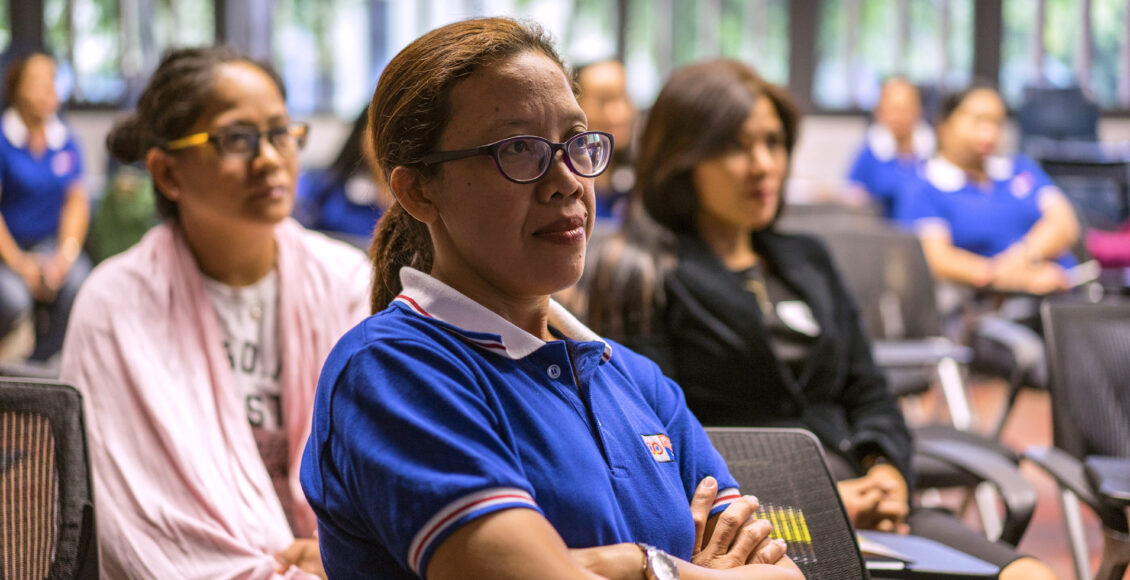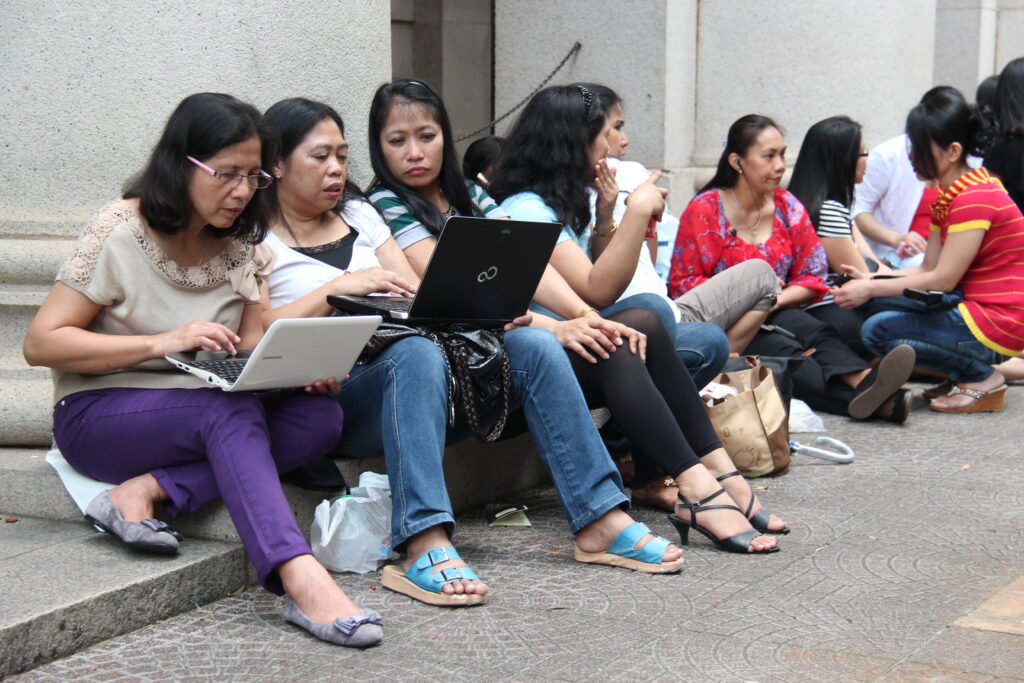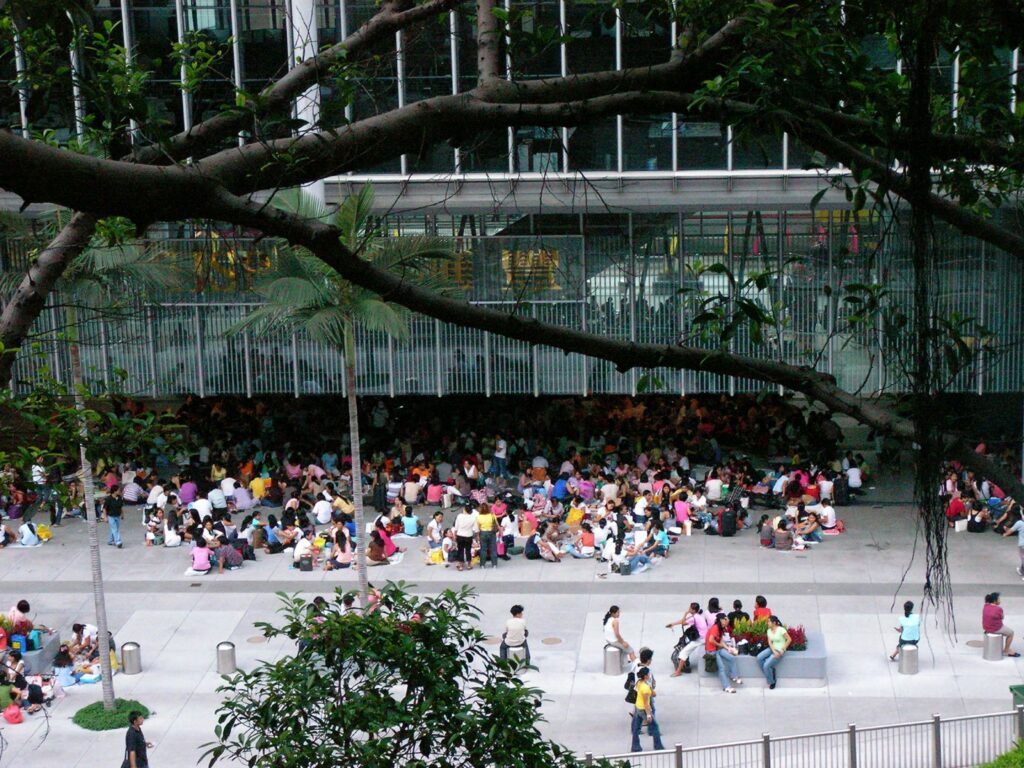Hero or Commodity? The Story and Realities Behind Philippine Overseas Migration

Wandering around the Marina Mall in Abu Dhabi waiting for Mum to finish work, I find myself peeping in and out of the various glamorous stores and boutiques the lavish shopping center has to offer. Later in the day, Mum has finally finished her meetings and we find ourselves at the nail salon for an end-of-day treat. As we enter the salon we are greeted with a warm “hello!” and look around the room to find that there are very particular social interactions taking place – Filipina workers gossip to each other in Tagalog as they give pedicures to the ladies who gossip to each other in Arabic. When a nail technician and customer interact, it’s perfect English. The social interactions, characterized by differences in language, origin, and status, are a subtle reflection of a much larger system at play.
This global system is the driving force behind the commodification of labour. The shift toward global neoliberalism in the 1970s significantly advanced the norms of globalization, accelerating both the means of production and technological connectivity worldwide. Heavily indebted nations in the Global South were pushed into accepting World Bank and International Monetary Fund (IMF) structural adjustment programs (SAPs). Often times, these programs require radical economic restructuring for states and heavily impact the livelihoods of its citizens. Specifically, these programs can sometimes worsen poverty, increase unemployment, and lead to socio-economic disparities. In doing so, the state of the Philippines began to rely on a single commodity as a means of escaping their debt. In order to be granted a loan package from the IMF, the conservative Philippine government of 1965 implemented sweeping economic reforms – lifting all import restrictions to allow for the movement of capital. Tactical devaluation of currency instead brought devastation to the people of the Philippines – tanking the economy. This led to large-scale capital flight, widespread bankruptcy, and a nationwide financial and economic crisis.
Failures to overcome both the domestic and global economic crises transformed the nation’s economic challenges into a full-blown debt crisis by 1981. In order to escape further debt, increased reforms led to privatization, currency exchange floatation, taxation, and a massive reduction in state expenditures. In 1981, the nation’s debt stood at USD $21 billion. In 2019, that same figure reached USD $84 billion. As time progressed and debt worsened, exporting labour became crucial to the state for economic survival. The Philippine government turned to manufacturing a framework to globalize its domestic labour system as a means of recovering the nation’s debt. In doing so, it institutionalized labour exports. According to the central bank of the Philippines, remittances sent back to the nation reached USD $32 billion in 2022. Though, for such a large quantity of capital inflow, there comes a cost. With the largest number of migrant labourers going to the Middle East, the government focuses on minimizing worker’s agency and maximizing market-centric policies. The state promotes the market by glorifying the migrant-worker ‘economic heroes’ of the nation; which inherently paints a pretty picture of a system that overlooks their freedoms and fundamental rights.

The Philippine state has created education and training programs matching the demands of labour markets around the world and monitored by the global network of Philippine embassies and consular offices. Migration agencies in the nation train prospective migrants to meet skill requirements associated with different visa categories. The Technical Education and Skills Development Authority (TESDA) is the primary organization that trains workers for employment abroad. TESDA is an overseeing body for private training companies that offer prospective employees with certificates of training to provide for their employers.
Though training certificates adds a sense of professionalization to the process, skills training cannot and does not fully protect migrant workers from exploitation. Migrant workers are expected to pay for their own training, and many are left in debt before they are sent off to their receiving country. Debts accrued from the training programs are often used as means of disciplining or intimidating workers. Lenders who offer prospective migrants money for their training often make arrangements with employers to have migrants’ pay patterns adjusted to pay off these debts. Employers therefore offer migrants incentives for earning extra money – a cycle which leaves them working overtime for less pay.
Migrant workers often encounter significant challenges that stem from their status as non-citizens in host countries, hence they are constantly suspended in a position of vulnerability. Promises to protect democratic rights and freedoms, whether from the sending or receiving country, or under international agreements like United Nations treaties, are constantly overlooked and ignored. The realities of gender oppression across the globe means the lives of non-citizen migrant women are shaped by the vulnerability to abuse that exists within the blurry lines of statelessness that they live in. They frequently face systemic discrimination, which often manifests in limited access to essential services such as healthcare, legal support, and safe working conditions. Wage theft and unsafe labour practices are widespread, but fear of exploitation and abuse leaves workers in fear of reporting violations. Often heavily indebted, women are particularly vulnerable as they seek higher levels of income to support their families back home. They face a crossroads where they are incentivized to work longer hours, overstay their visas, and sometimes experience sexual exploitation.

In order for change to occur, effective policy must be implemented. Efforts to improve migrant’s realities of work must focus on policy changes that ensure equal treatment, promote access to services, and foster supportive communities that empower migrant workers to assert their rights. Section 4 of the Migrant Workers and Overseas Filipinos Act of 1995 states the Philippines shall only send migrant workers to countries where the rights of Filipino migrant workers are protected. This would apply to states that have existing labor and social laws protecting migrant rights, or are signatories within multilateral conventions relating to the protection of overseas workers. In 2021 there were 23,986 recorded cases of abuse involving workers in the Gulf Cooperation Council – 18,000 or 75% of these cases were incidents involving women.
These migrant workers serve as the backbone of not only the Philippine economy, but their families back home. A complete ban on Philippine labor-export policies would cancel any hope of a better life for individual workers, their families, and the recovery of the state’s economy. While the Philippines has a migrant protection act within its constitution and implicitly promises the protection of its peoples and ‘heroes’, the realities of some workers is nothing short of the complete opposite. In an increasingly globalized world dependent on global commodity flows, the Philippine government must prioritize the protection of its workers by addressing the disconnect between policy and practice. When state-level migrant protection acts such as the Migrant workers and Overseas Filipinos Act of 1995 aim to challenge the human rights abuses migrant workers face, the government often resorts to turning a blind-eye the standards and precedent they themselves have set. They may agree to ratify these statutes but consistently fail to implement them effectively, placing the burden of such failure entirely on those who are treated as mere commodities within a system that paradoxically depends on them – migrant workers.
Featured image: “The roads travelled for work – Women Migrant Workers in Singapore and Malaysia” by UN Women is licensed under CC BY-NC-ND 2.0
Edited by Hannah Lalonde
